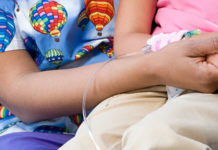Learning and improving clinical skills among new nurses is easy by watching nursing skills videos online. With the help of modern technology, you can watch practical demonstrations of different essential nursing skills in the comfort of your own home or from your mobile devices.
To help you get started, watch the following important clinical skills every new nurse should know:
1. Basic Head-to-Toe Assessment
This is one of the basic clinical skills nurses should master at the beginning of their career. By doing a head-to-toe assessment properly, you can quickly identify your patients’ health problems that need immediate medical attention.
This video is helpful in learning how to do the assessment systematically in a short period of time. It also explains why the nurse’s action is important in the clinical skill being presented.
2. Making an Occupied Bed
Changing linens for bedridden patients is tricky but with practice, you can easily do this within minutes. There are several tricks taught to nurses so that changing of linens is efficient even though the patient is still occupying the bed.
In this video, the steps in making an occupied bed are explained and demonstrated by using a dummy patient. The demonstration was done in a clinical simulation room for students. The instructions are clear and you can easily follow the steps presented.
3. Donning Sterile Gloves
Sterile gloves are supposed to be free from any microorganism. With that, there’s a special technique nurses use to put them on before any invasive procedure or before getting in contact with sterile sites or body cavity.
Wearing sterile gloves the right away can also minimize or prevent surgical site infections and lower the risk of exposure to body fluids.
4. ECG Reading
Learning how to read ECGs is hard at first but with practice, you can easily identify normal and abnormal ECG rhythms with just a quick glance.
This tutorial video will teach you how to interpret ECG rhythms quickly. It is complete with explanations and tricks on how you can quickly memorize ECG interpretations within minutes. This skill is important if you plan to get certification for Basic Life Support and Advanced Cardiac Life Support training.
5. Cardiopulmonary Resuscitation
Cardiopulmonary resuscitation is a critical life-saving technique during emergencies. It is one of the basic skills nurses should know as the American Heart Association recommends all medical personnel to be well-trained in this skill.
This video is helpful in familiarizing yourself on how to do CPR properly. For CPR to be effective, chest compressions should be deep and done rhythmically.
It is best to watch CPR tutorials online before you get certification for Basic Life Support and Advanced Cardiac Life Support training. They can help you be more familiar with the steps and procedures essential for the skill.
6. Patient Transfer
It’s difficult to transfer a patient from his bed to a chair if you are not familiar with proper patient transfer techniques. It compromises the patient’s safety as well as put you at risk of occupational injuries.
This video demonstrates how you can easily transfer a bed-ridden patient to another chair without exerting too much effort and energy. You can use it as a guide for practicing this skill at home with your relatives.
7. Taking Vital Signs
Your patient’s vital signs are important measurements of his body’s most basic functions. They are critical in determining medical problems and in monitoring for improvements.
As a nurse, it’s your responsibility to take your patients’ vital signs as accurately as possible. You are also in charge of documenting the data and communicating them with the rest of the healthcare team.
This particular video shows how to take a patient’s body temperature, blood pressure, respiratory rate, and pulse rate. The steps are simple and super easy to understand.
8. Medication Administration
To ensure patient safety, you need to make sure that you are administering the right medication at the right dose to the right patient. This video shares a step-by-step guide on how you can do that.
9. Care of Patient’s Hair
Shampooing your patient’s hair helps remove old oils and dirt. It also minimizes or prevents skin irritation and helps stimulate blood circulation.
If you are caring for a completely dependent patient, this video will help you complete the procedure safely and properly. It also outlines the things you’ll need so you won’t have to run back and forth while doing washing your patient’s hair.
10. Proper Hand Washing
Handwashing might sound like an easy thing to master but a lot of healthcare professionals fail to do it properly. In this video, you’ll learn all about handwashing using the World Health Organization technique. Apart from showing you the right way to do it, there’s also a summary at the end to help you remember the steps easier.
11. Donning and Doffing PPE
Proper donning and offing of PPE or Personal Protective Equipment is critical for your health and safety as a nurse (1). PPE can help prevent the spread of bacteria in the hospital as well as protect health care workers from infections.
This video carefully explains the steps of donning and removing gloves, gowns, masks, and face shields. It also gives special tips to help you stay safe when wearing your PPE.
12. Cranial nerve assessment
The cranial nerve test is performed to help nurses assess the neurological status of their patients. Each test targets a specific cranial nerve.
In this video, you’ll learn about the 12 cranial nerves and how you can assess each one.
Other Videos You Should See
- IV Insertion
- Tracheostomy Care
- Central Line Dressing Change
- Nasogastric Tube Insertion
- Indwelling Urinary Catheter Insertion
- Enteral Feeding
- Changing Wound Dressing
- IV Injection using Z-track Technique
Also Read: Emergency First-Aid For Nurses: A Practical Guide
Are you already familiar with the nursing skills videos included in the list above?
New nurses nowadays are fortunate to have convenient access to clinical skills demo anywhere and anytime online. New nurses from decades ago had to learn these skills on the spot and from actual experiences.
Improving your clinical skills is now easier with the help of video tutorials so maximize your learning resources online.
We hope you found the videos we’ve listed helpful and educational. We’d love to hear from you so do drop by our FB page or Instagram!
References:
1. Brown, L. (2019). Use of personal protective equipment in nursing practice. Nursing Standard, 34(5).
Also Read: 100 Must-Watch YouTube Tutorials for Nurses



















